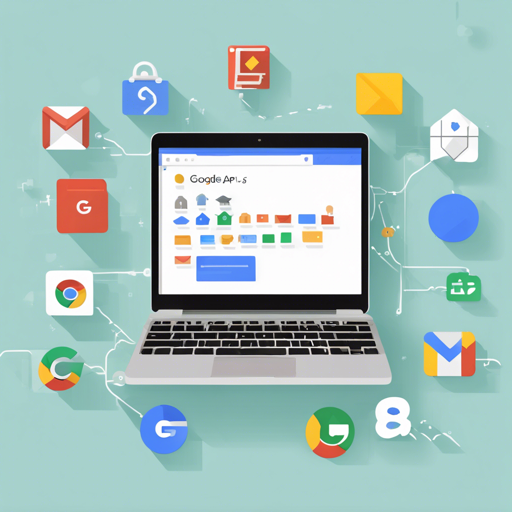If you’re new to programming or find the official Google APIs a bit tricky, you’re in the right place. This blog will guide you through creating a secret API key, installing the necessary library, and running some quick API commands effortlessly. Let’s dive in!
Creating Your Secret API Key
To interact with Google APIs, you first need to create a service account and generate an API key. Here’s a step-by-step guide:
- Open your web browser and navigate to console.cloud.google.com.
- Create a new project. Make sure it is selected.
- Locate the “API & Services” tab in the menu.
- Click on “Create Credentials”.
- Select “Service Account”.
For a detailed video tutorial, check out this resource: create_service_account_googleapis.webm.
Installing the Googleapis Client Library
Once you’ve created your API key, it’s time to install the Googleapis library. You can do this easily using Dart’s package manager. Simply run the following command in your terminal:
bash
dart pub add googleapis_client
Adding the Library to Your Project
To utilize the library in your Dart project, include it using the following import statement:
dart
import 'package:googleapis_client/googleapis_client.dart';
Accessing the Documentation Offline
If you don’t have much internet quota left, you can clone the documentation repository and access it offline with these commands:
bash
git clone https://github.com/azkadev/googleapis_client.git
cd googleapis_client
cd web
flutter clean
flutter pub get
flutter run
Quickstart: Sample Code to Interact with Google APIs
Now that you have everything set up, let’s take a look at some quick sample code that uses the Googleapis Client Library. Think of this code like a recipe for a delicious dish, where each ingredient has a role to play.
Imagine you’re a chef preparing a meal. Each step is like a line of code you need to follow carefully to create the perfect recipe, leading to tasty outcomes. Here’s how to get started:
dart
import 'dart:convert';
import 'package:googleapis_client/googleapis_client.dart';
void prettyPrint(dynamic data) {
if (data is Map || data is List) {
print(JsonEncoder.withIndent(' ').convert(data));
} else {
print(data.toString());
}
}
void main(List args) async {
GoogleApisClient googleApisClient = GoogleApisClient(
googleApisClientApiKey: GoogleApisClientApiKey(
type: 'service_account',
project_id: 'your_project_id',
private_key_id: 'your_private_key_id',
private_key: '-----BEGIN PRIVATE KEY-----\nYOUR_PRIVATE_KEY\n-----END PRIVATE KEY-----\n',
client_email: 'your_client_email',
client_id: 'your_client_id',
auth_uri: 'https://oauth2.googleapis.com/auth',
token_uri: 'https://oauth2.googleapis.com/token',
auth_provider_x509_cert_url: 'https://www.googleapis.com/oauth2/v1/certs',
client_x509_cert_url: 'your_x509_cert_url',
universe_domain: 'your_universe_domain',
),
);
await googleApisClient.youtube.subscribeChannel(channel: '@your_channel');
await googleApisClient.youtube.addComment(videoId: 'YOUR_VIDEO_ID', text: 'This is an automated message');
await googleApisClient.request(
requestData: YoutubeGetChannel.create(
special_type: 'youtubeGetChannel',
channel_id: '@your_channel',
),
);
await googleApisClient.request(
requestData: JsonApis(
'@type': 'youtubeSubscribeChannel',
'@client_channel': 'your_client_channel',
channel_id: '@your_channel',
),
);
await googleApisClient.request(
requestData: JsonApis(
'@type': 'gmailSendMessage',
email_id: 'email@gmail.com',
text: 'Your email text here',
),
);
}
Troubleshooting
If you encounter issues along the way, here are some troubleshooting ideas:
- Ensure all dependencies are correctly installed.
- Verify your API key and service account settings in the Google Cloud Console.
- Check for typos in your code, especially in keys and identifiers.
- If you’re unsure how to proceed, refer to the official documentation for more comprehensive guidelines.
For more insights, updates, or to collaborate on AI development projects, stay connected with fxis.ai.
Final Thoughts
At fxis.ai, we believe that such advancements are crucial for the future of AI, as they enable more comprehensive and effective solutions. Our team is continually exploring new methodologies to push the envelope in artificial intelligence, ensuring that our clients benefit from the latest technological innovations.

